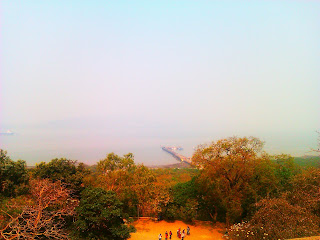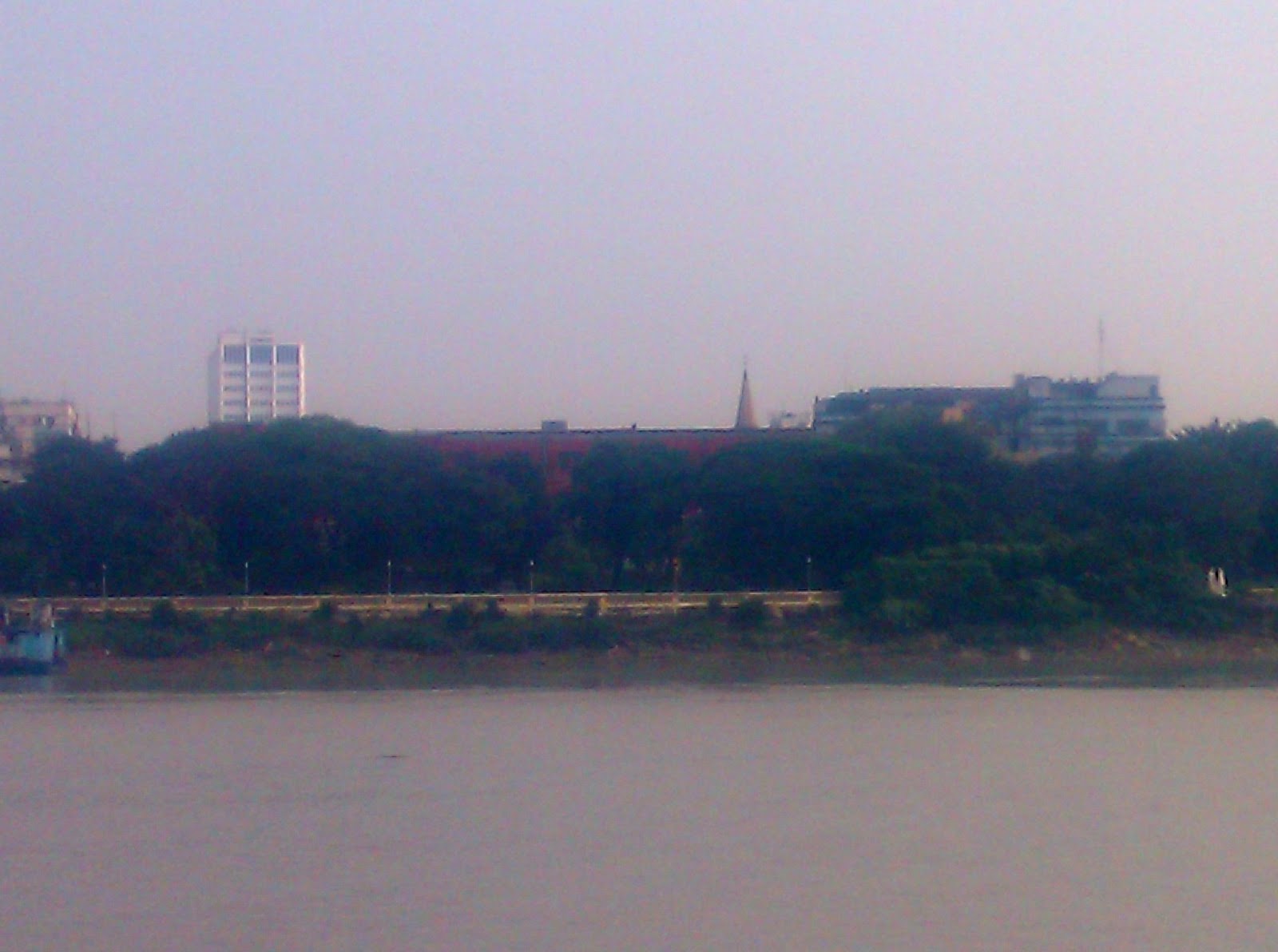 Elephanta at best is a one day trip or even half a day. It is not the best tourist destination around Mumbai to visit. The ferry ride which otherwise could be interesting is dull and boring, the sea is dirty, if you travel when the Sun is out , it gets quite warm and the day we went there the wind hardly was a relief.
Elephanta at best is a one day trip or even half a day. It is not the best tourist destination around Mumbai to visit. The ferry ride which otherwise could be interesting is dull and boring, the sea is dirty, if you travel when the Sun is out , it gets quite warm and the day we went there the wind hardly was a relief. 
 |
| The photographs above include one of Gateway of India and the others of the ferries that operate between Elephanta and Mumbai. The photographs are taken from the ferry that we were on |
 |
| post 26/11 terrorist attack notice |
 |
| the toy train |
Yes, it is cheap, the two and fro fare on the ferry is insignificant, about 300 per person or even less than that. There are a few small restaurants on the stairs to the cave. There is a toy train that takes you from where you get off the ferry to the base of the stairs which you have to climb to get to the caves.
At this point there is a restaurant where they also serve beer, so if you are the type you can go up to the caves dedicated to Shiva, intoxicated, even if only with beer. The monkeys are a bit of a bother as they are all over the country in a location like this, so you carry your food carefully, do not mess with the monkeys and you are safe. All in all , not a hugely exciting trip or location and if you are stuck with a large family sharing the ferry, which has made a tour out of it then you are in for some pain.
Having said that, I must say that the caves are an eye opener, they bring your attention to a part of Ancient History of the subcontinent that we as students of History in schools and colleges gloss over.
 |
| Entry point of the caves |
Here, at Elephanta, the cave sculptures are dedicated to Shiva who could not be very fashionable at that point of time. All around Mumbai there are Buddhist caves- Kanehri, Mahakali etc.(many others all over the western ghats I am told) Then how is it that here Shiva is depicted in all his moods.
 |
| Shiva in different forms |
Obviously the caves are from a later period, it is indicated that they were abandoned by the Buddhist who occupied them first once the royal patronage started receding. It probably signifies a struggle for prominence between Buddhism and various other set of beliefs and religious practices which we now understand as Hinduism. Some research will tell you that it was commissioned by a Chalukya king Pulakesin II, somewhere around the sixth or the seventh century AD when the days of glory of Buddhism were long past. But if you look at the face of Shiva in the cave sculpture you will find great resemblance to the serenity of Buddha, which is something you hardly associate with Shiva otherwise.
 |
| Won't you mistake it for an image of Buddha, the difference is that the sculpture has three heads. This is shiva as the creator, preserver and destructor |
Due to contemporary inter religion strife; the focus has been on the differences between the followers of a set of religious and spiritual belief broadly named Hinduism and those of Islam. The school and college history focuses on the political; the struggle between various streams of Hinduism and Buddhism is hardly a focus.
 |
| Other images |
 Elephanta at best is a one day trip or even half a day. It is not the best tourist destination around Mumbai to visit. The ferry ride which otherwise could be interesting is dull and boring, the sea is dirty, if you travel when the Sun is out , it gets quite warm and the day we went there the wind hardly was a relief.
Elephanta at best is a one day trip or even half a day. It is not the best tourist destination around Mumbai to visit. The ferry ride which otherwise could be interesting is dull and boring, the sea is dirty, if you travel when the Sun is out , it gets quite warm and the day we went there the wind hardly was a relief. 





























































